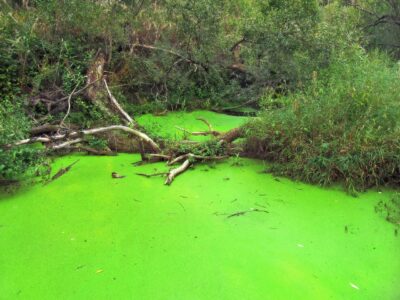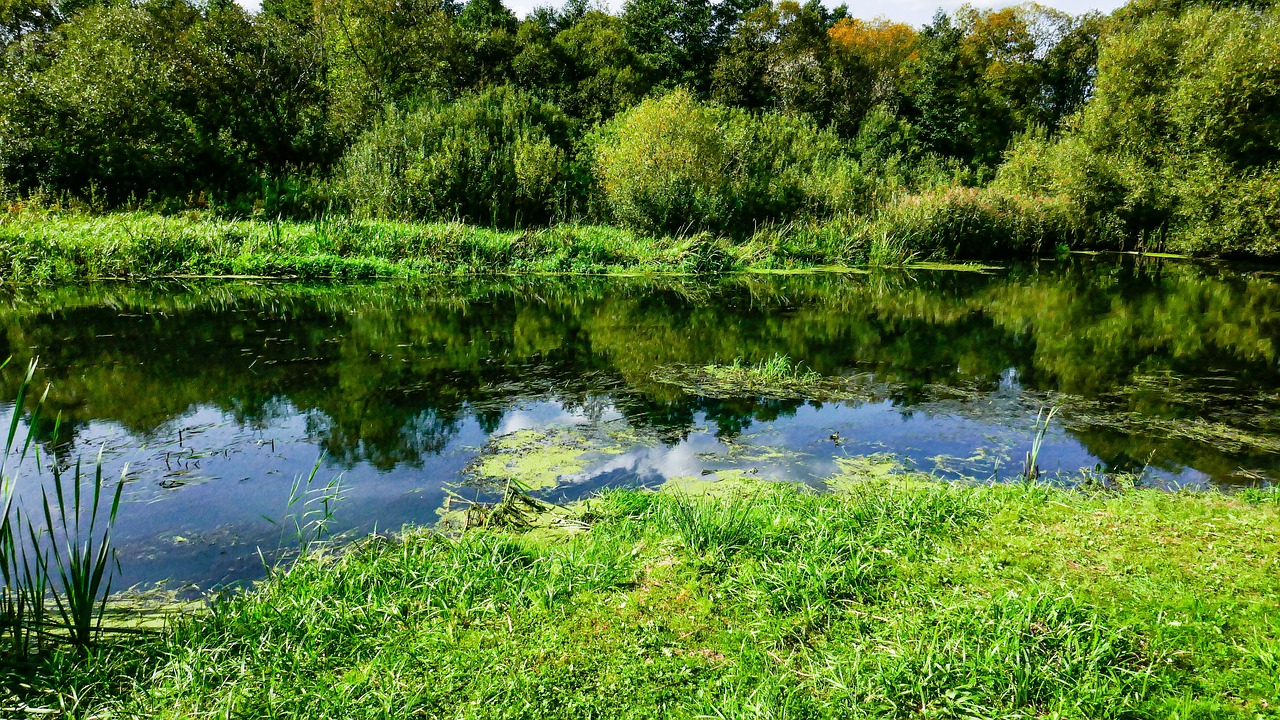Keeping Your Pond Free from Harmful Algae Blooms
As any Rochester or Upstate New York pond owner will tell you, ponds are a beautiful addition to any landscape. They provide a serene and tranquil space for relaxation and enjoyment. However, ponds are also prone to algae growth, which can quickly turn a beautiful pond into an unsightly mess. Algae growth not only ruins the aesthetics of a pond, but it can also be harmful to the pond’s ecosystem. In this article, we will discuss the dangers of pond algae, how to prevent the growth of pond algae, and the best natural treatments for pond algae.
What is Pond Algae?
 Algae are photosynthetic organisms that can grow in any body of water, including ponds. Algae growth occurs when the pond’s ecosystem is out of balance. Excessive nutrients, sunlight, and warm temperatures all contribute to algae growth. Algae can take many forms, from single-celled organisms to complex multi-cellular structures. The most common type of pond algae is green algae, which can quickly take over a pond and turn the water green.
Algae are photosynthetic organisms that can grow in any body of water, including ponds. Algae growth occurs when the pond’s ecosystem is out of balance. Excessive nutrients, sunlight, and warm temperatures all contribute to algae growth. Algae can take many forms, from single-celled organisms to complex multi-cellular structures. The most common type of pond algae is green algae, which can quickly take over a pond and turn the water green.
While algae may seem both unsightly and harmless, it can be both toxic and dangerous to the pond’s ecosystem and its inhabitants. Algae growth can reduce oxygen levels in the water, causing fish and other aquatic life to suffocate. Algae can also block sunlight from reaching the bottom of the pond, preventing the growth of beneficial aquatic plants and starving your pond’s ecosystem. But most importantly, harmful algae blooms can produce often deadly toxins that can harm both humans, farm animals, and our beloved pets that come into contact with the water, often within a matter of hours.
Effective Algae Treatment: Chemical vs. Natural Solutions
When it comes to treating algae growth in your pond, there are two main options available commercially: chemical and natural treatment solutions. Chemical solutions involve the use of algaecides, which are chemicals that kill algae. While these products may be initially effective at removing algae, they can also harm the pond’s ecosystem and its inhabitants. Natural solutions, on the other hand, involve the use of natural products such as beneficial bacteria and other methods to prevent, treat and remove harmful algae from your pond and return it to good health.
Natural Treatments for Pond Algae
There are several natural treatments for pond algae in the Rochester, Syracuse, and Upstate New York region that can be effective at controlling algae growth. As mentioned above, one of the best natural treatments is the regular use of beneficial bacteria. Beneficial bacteria can help break down organic matter in the pond, reducing the nutrients that the algae feed upon. Another effective natural treatment includes the use of barley straw. Barley straw contains compounds that can inhibit algae growth without harming the pond’s ecosystem.
Preventing Algae Growth in Your Pond
Preventing algae growth in your pond is the best way to keep your pond clean, clear and healthy. The first step in preventing algae growth is to maintain good pond hygiene. This includes removing debris from the pond, such as leaves and twigs, and regularly cleaning the pond filter. You should also avoid overfeeding fish and use a pond skimmer to remove excess fish food and waste from the water. An excellent way to prevent algae growth is to plant aquatic plants in your pond, which can help absorb excess nutrients which algae needs to grow.
Farm Pond Algae Treatment
Farm ponds are often used for irrigation, livestock watering, and recreation. However, farm ponds are also prone to algae growth, which can be harmful to crops and livestock. To treat algae in a farm pond, it is important to first identify the cause of the algae growth. Common causes of algae growth in farm ponds include nutrient runoff from nearby fields and overfeeding fish. A reputable pond maintenance professional can evaluate your pond’s ecosystem and overall health and help identify the cause of the algae growth in your pond. Then appropriate steps can be taken to prevent it from occurring in the future, saving you time, aggravation, and money over the long term. This may include reducing fertilizer use, planting buffer strips around the pond, and using natural treatments such as beneficial bacteria and barley straw.
Large Pond Algae Mitigation
Eliminating algae growth in a large pond can be a challenging task. Large ponds often require more natural treatments and methods than smaller ponds. One effective method for eliminating or minimizing algae growth in a large pond is the use of aeration. Aeration involves using a pump to circulate the water in the pond. This can help reduce algae growth by increasing oxygen levels throughout the pond. A regular schedule of natural pond maintenance and treatment will also go a long way to keeping your pond clean, clear, and healthy.
Professional Pond Algae Control Services
If you are unable to treat algae growth in your pond on your own, we encourage you to seek professional help. Our Rochester professional pond maintenance and cleaning services can provide effective solutions for eliminating the growth of harmful algae blooms in your pond.
Harmful blue-green algae blooms in ponds are a common problem in the Rochester, Western, and Central New York areas and the Southern Tier. It is a problem that is not only harmful to the pond’s ecosystem and its inhabitants, but to humans and animals alike that live near the pond. However, by understanding the dangers of pond algae and using natural treatments and prevention methods, you can keep your pond crystal clear and healthy. Whether you choose to go the DIY route or seek professional help, there are many solutions available for controlling algae growth in your pond. So, take action today and start enjoying your beautiful, algae-free pond.





